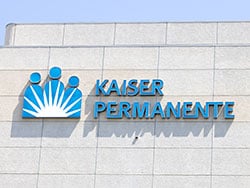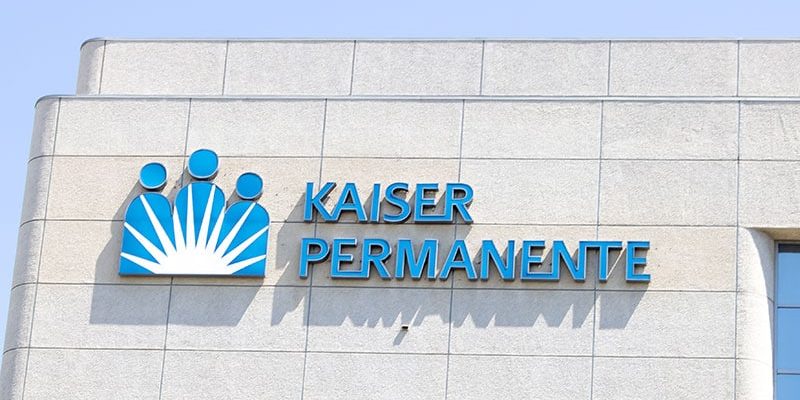In one of the largest healthcare deals to date, Kaiser Permanente is acquiring Pennsylvania-based Geisinger Health and investing $5 billion to fold it into a new nonprofit subsidiary called Risant Health, which is set to purchase additional medical groups in coming years.
While regulators still must review this initial acquisition, the marriage of Kaiser and Geisinger would create a behemoth with more than $100 billion in annual revenue — 95% of it coming from the Kaiser side of the equation.

Like Kaiser, Geisinger both owns hospitals — 10 of them — and operates its own health insurance program. Unlike California-based Kaiser, which operates a closed system of 39 hospitals and employs 24,000 doctors, Geisinger accepts health insurance from other payers.
The deal marks a significant turning point in the healthcare consolidations of the past two decades, albeit a perplexing one, notes Paul Ginsburg, PhD, professor of health policy practice and management at the University of Southern California’s Sol Price School of Public Policy.
“It baffles me as to how Kaiser could see the Geisinger clinic being helpful to it given the disparate geographic element,” he said. “I wouldn’t think that Kaiser is at all close to being able to offer a national insurance plan because there would be too many giant [geographic] holes in it.”
But the announcement that Risant is set to acquire additional health systems may signal that Kaiser is maneuvering to become a national player. Kaiser has tried in vain to expand into Texas, New York, and North Carolina in the past.
“It’s too soon to tell what the effects may be on doctors and patients,” Ginsburg said. He noted that, by controlling both medical services and insurance plans, Geisinger and Kaiser share critical synergies that may ease the way for joining forces.
Tempted by the $5 billion backing for Risant, other medical groups still struggling to recover post-pandemic likely are weighing the benefits of similar deals for themselves, he says.
Former Department of Justice healthcare antitrust attorney Thomas Greaney, JD, a visiting professor at UC (formerly Hastings) College of Law San Francisco, sees few reasons why regulators would weigh in to oppose the deal. In fact, there’s a potential for increased market competition for national accounts, he says.
“There are only four major insurers handling national accounts right now, so this could be pro-competitive,” Greaney says. There’s a caveat, though: If Kaiser uses Risant to push “all-or-nothing” contracting on insurance carriers — requiring them to include all hospitals and clinics in the network if they wish to do business with any of them — that could force prices up and attract antitrust attention.
Sachin Jain, MD, MBA, chief executive officer of SCAN Group, doubts that it will come to that. Instead, he believes that by creating Risant, Kaiser is developing a new category of healthcare services organization.
“These non-geographically contiguous health systems with centralized capabilities can drive new dynamics and improve performance,” he said. “It’s both an offensive and defensive move by Kaiser and Geisinger to try to strengthen themselves, but at the same time there’s a lot of promise in what they’ve announced publicly.”
He knows what it’s like. SCAN announced in December that it is merging with CareOregon to form the HealthRight Group. “We’re seeing opportunities to make one plus one equal three and I believe that’s exactly what Kaiser and Geisinger are doing, too.”
But Robert Pearl, MD, former CEO of Permanente Medical Group, is concerned by the fact that it’s the health plan arm of Kaiser — not the combined entity — that’s making the Geisinger acquisition. Care delivery within Kaiser Permanente is done by the medical group, he notes.
“The secret sauce of Kaiser Permanente has been the combined purpose of both the health plan and the medical group,” he says. “If you don’t bring that entire sauce to the table, it diminishes the likelihood of the outcome being as good as it otherwise might be.”
Jeff Goldsmith, PhD, president of consulting firm Health Futures, also has his doubts.
“Kaiser has no experience in turning around a large, multi-payer integrated system like Geisinger,” he says. “Geisinger is in deep financial trouble and Kaiser has had a challenging couple of years, too. They’re not going to rebrand Geisinger, so what is Kaiser doing exactly?”
Individual doctors, too, are watching the deal with fascination after years of seeing private practices absorbed into increasingly large networks.
“UPMC vs Kaiser is Godzilla vs King Kong,” wrote Phil Grieshaber, MD, on Reddit, referring to the University of Pittsburgh Medical Center network, Geisinger’s primary competition in its Pennsylvania market. “This is gonna be a bloodbath.”
Grieshaber, a general practitioner who currently is on medical leave, told Medscape he expects the rivals will spend significant money at first to gain the upper hand. But within a few years, he believes the competitors will contract and begin cutting costs and reducing care.
“This is, of course, just my opinion,” he says. “But I’m not optimistic about this being a positive for everyone.”
For more news, follow Medscape on Facebook, Twitter, Instagram, YouTube, and LinkedIn
Source: Read Full Article
